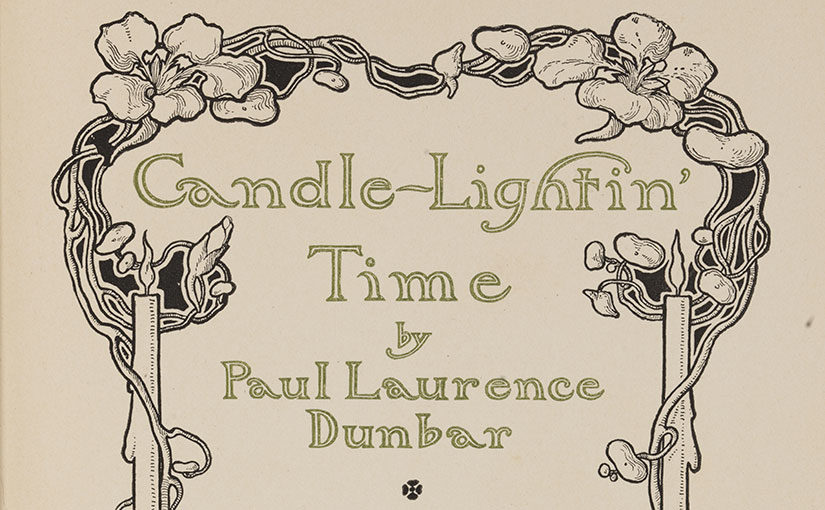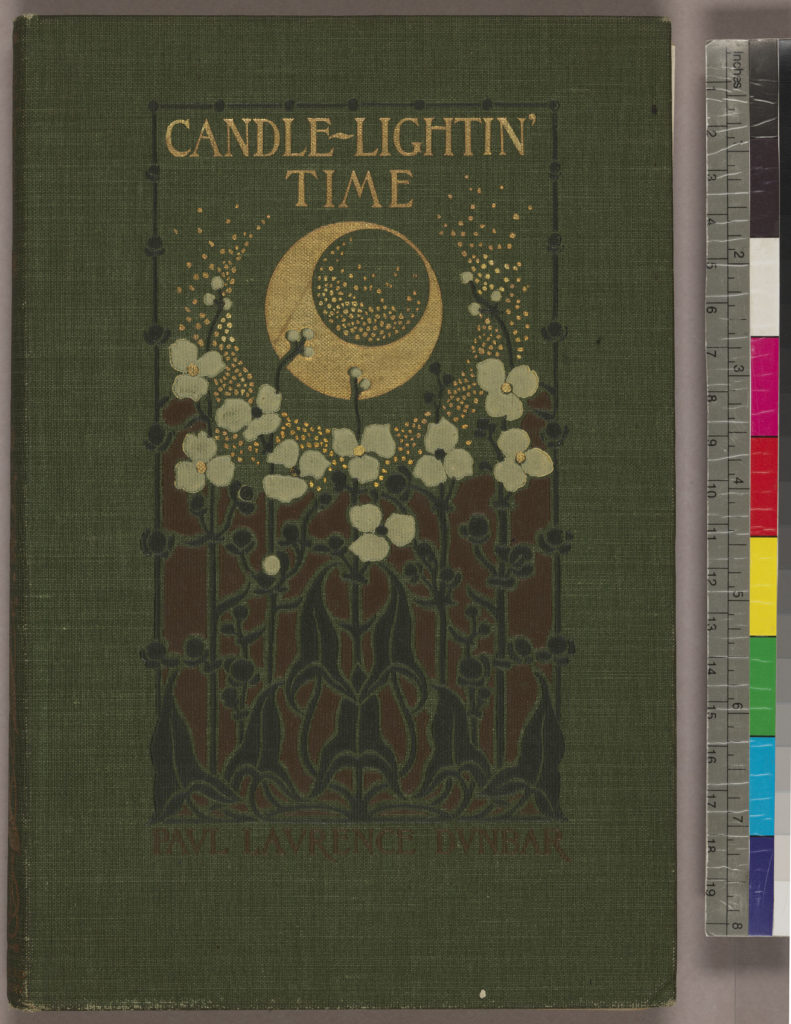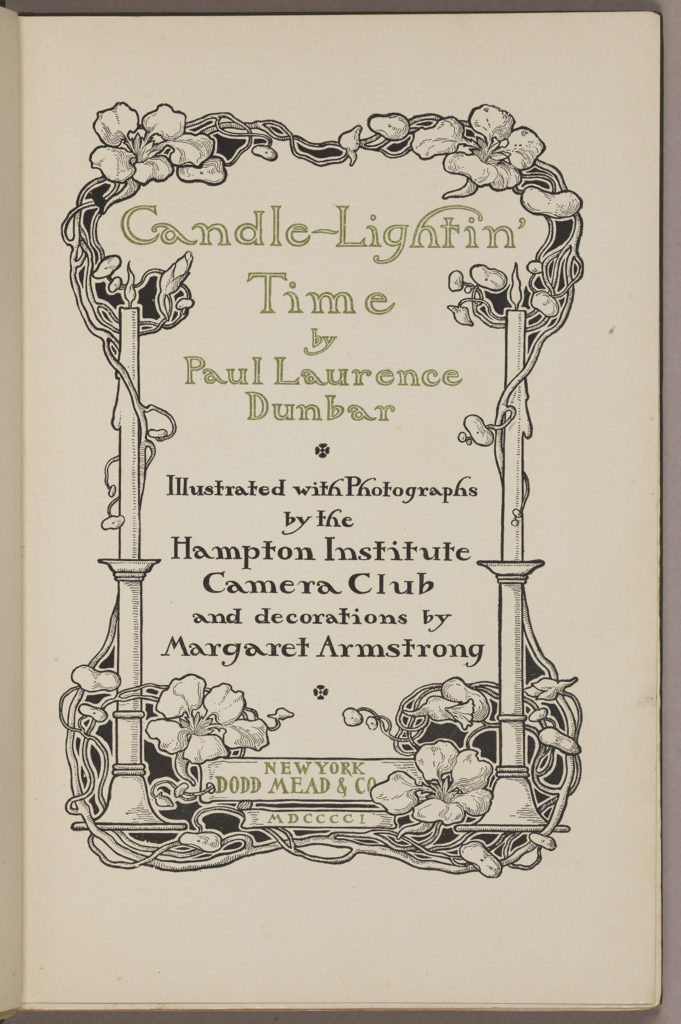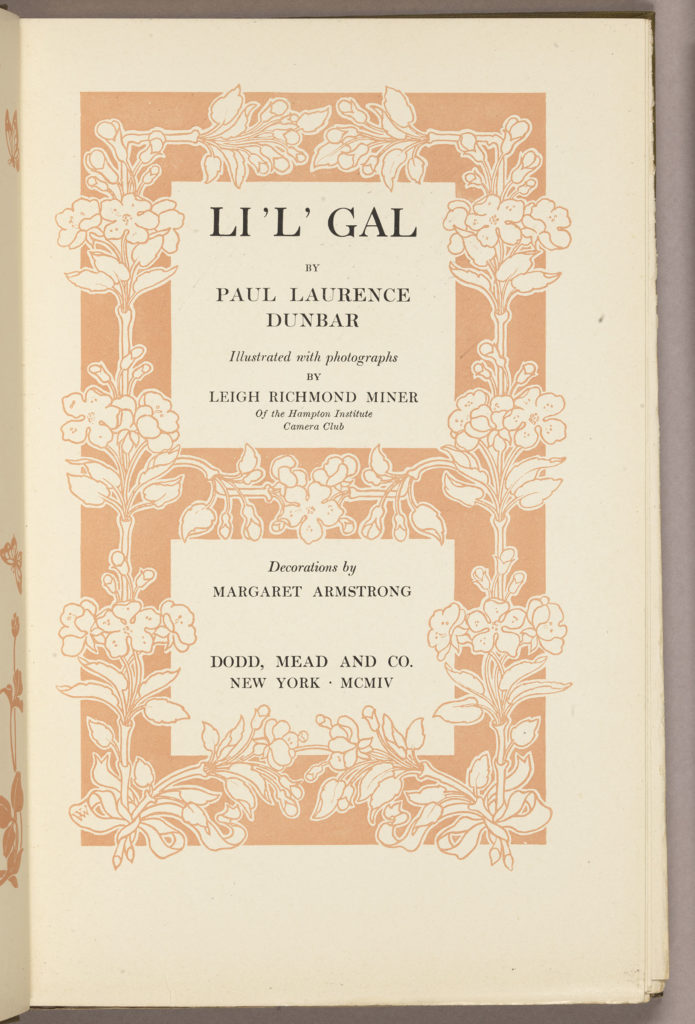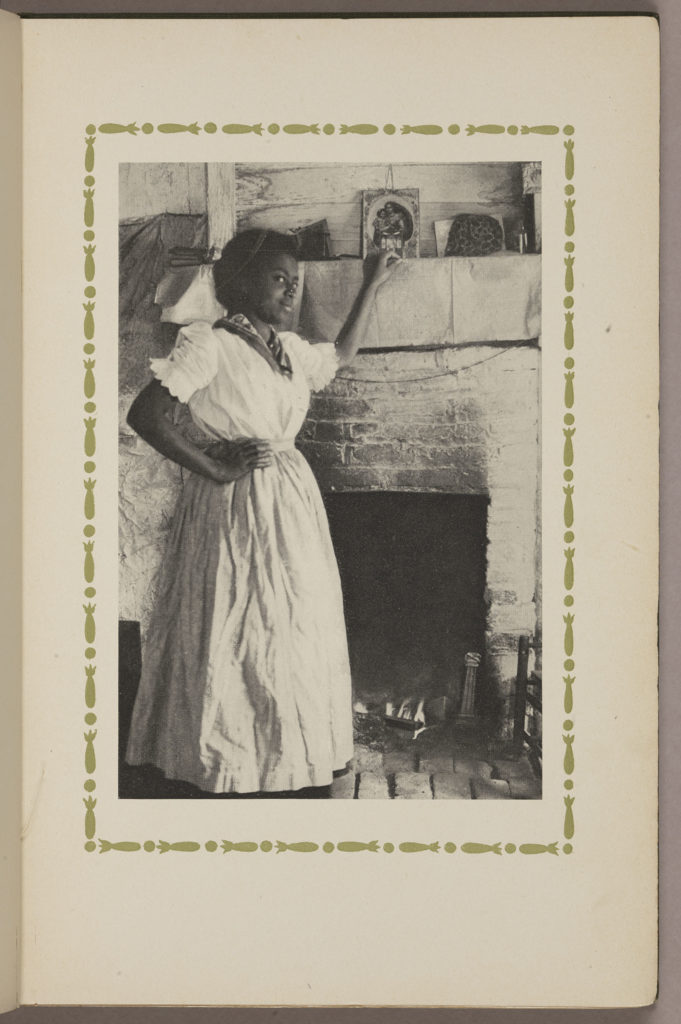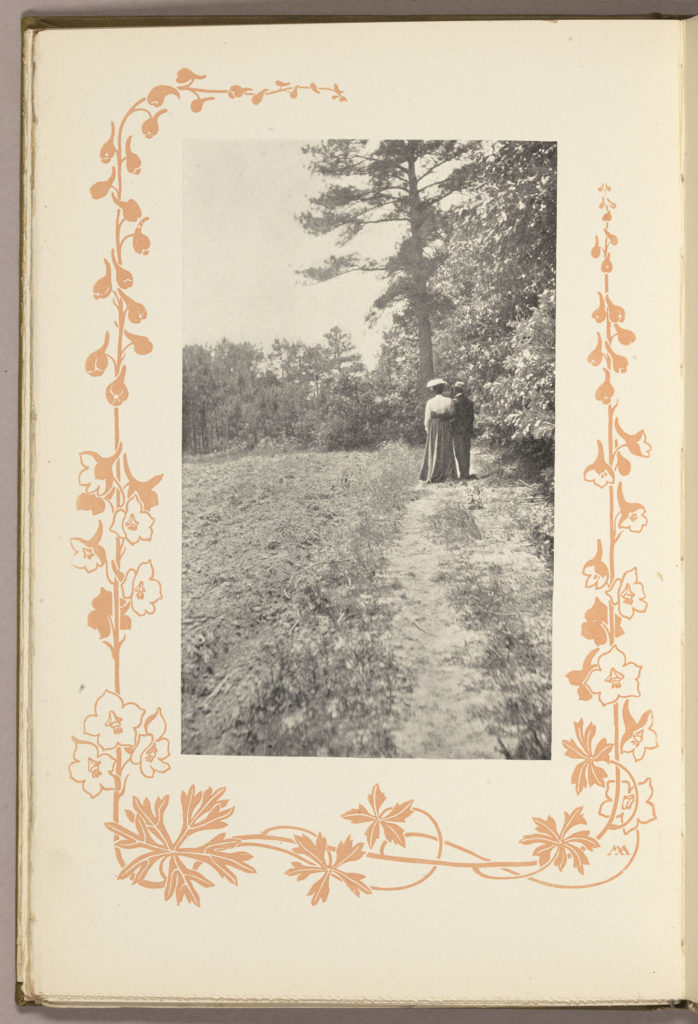We join The Library of Congress, National Archives and Records Administration, National Endowment for the Humanities, National Gallery of Art, National Park Service, Smithsonian Institution and United States Holocaust Memorial Museum to celebrate African American History Month.
Paul Laurence Dunbar’s New Literary Tradition Packaged to Sell
by Rachel Bohlmann, American History Librarian and Curator
Poet and writer Paul Laurence Dunbar (1872-1906) was interested in creating an African American literary tradition based on oral sources. In both works of poetry shown here, Candle Lightin’ Time and Li’l’ Gal, Dunbar used dialect, a choice he made for some of his work. Unlike most contemporary white writers, who used dialect in openly racist ways, Dunbar appropriated dialect as a way to represent fully African American expression.
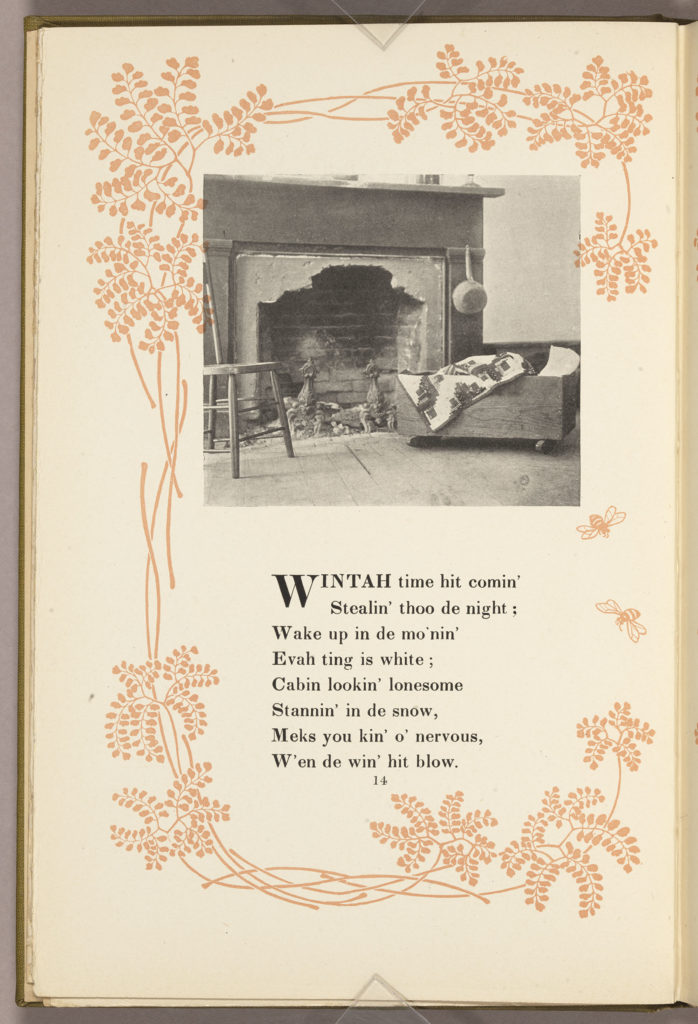
The books’ appearance—the detailed and beautiful bindings, illustrations, and page designs—point to Dunbar’s publisher’s confidence in their profitability. Dodd & Mead of New York produced a string of the writer’s works, a partnership that helped propel Dunbar’s popularity. Margaret Armstrong (1867-1944), one of the most successful book designers working in this period, created the bindings. Her art nouveau style featured plant motifs and gold-stamping.
The photographs for Candle Lightin’ Time were taken by the mostly white members of the Hampton Institute Camera Club, an amateur group of photographers affiliated with the Hampton Normal and Agricultural Institute (now Hampton University) in Virginia. The illustrations in Li’l’ Gal were taken by Leigh Richmond Minor (1864-1935), an art teacher at the institute and a trained photographer. Although the pictures were staged, their subjects are presented fully as individuals, another way in which Dunbar’s books overturned contemporary, racist depictions of African Americans.
Born in Dayton, Ohio in 1872 to parents who were formerly enslaved, Dunbar showed early literary talent. He edited his high school newspaper, served as president of the school’s Philomathean Literary Society, and edited a newspaper for Dayton’s African American community for a short time. Financial hardship kept him from pursuing a college education and he found work as an elevator operator, although he continued to write.
With the support of local backers, he published Oak and Ivy in 1893, a collection of poems in both standard English and dialect. By 1895 his work was praised and championed by Frederick Douglass and by literary critic William Dean Howells. Although Howells and other white critics focused heavily on Dunbar’s use of dialect (much to the writer’s dismay) and placed his work in a tradition of white writing about plantation slavery, the breadth and variety of Dunbar’s literary work transcended the racist limitations of most dialect writing of the time.
In addition to poetry, Dunbar wrote novels, short stories, and at least one play. He gained national and international recognition at the turn of the twentieth century, one of the first African American writers to do so. He was an important literary precursor for writers of the Harlem Renaissance, two decades later.
In Rare Books and Special Collections, Dunbar’s works are part of growing collection of African American literature and historical works published before 1920 and the start of the Harlem Renaissance. Other writers include Benjamin Brawley, Maud Cuney Hare, Helen S. Woodruff, Walter E. Todd, Leila Amos Pendleton, and Oscar Micheaux.
